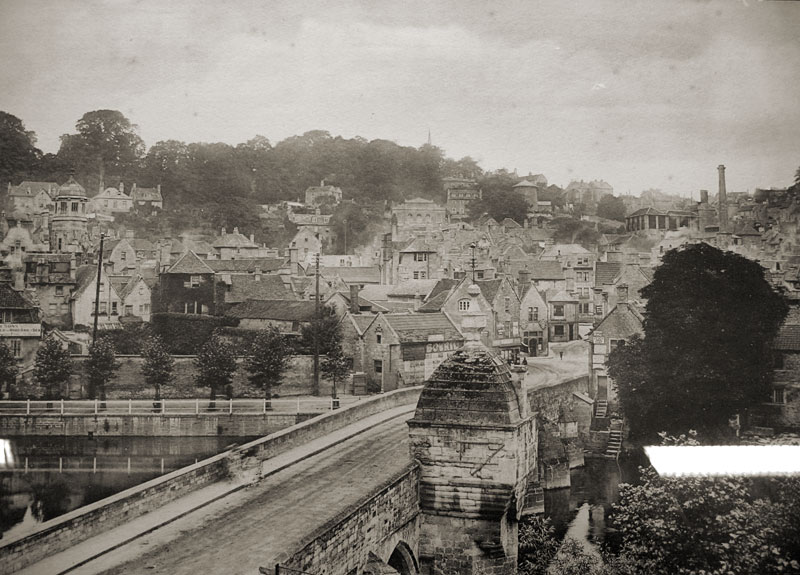Bradford on Avon: An introduction
During more than two millennia a settlement has existed near the broad ford across the River Avon from which Bradford on Avon takes its name.
In the Early Iron Age a fort with dry-stone walls was built on top of the hill overlooking the ford. A large important Roman villa was later established nearby and there were other villas in the district.
Bradford first enters history in the year 659, when Kenwalh, the King of Saxon Wessex, fought a battle at the ford.
In about 700 St Aldhelm, the Abbot of Malmesbury and a relation of King Ine, founded a small monastery here to help convert the pagan West Saxons.
In 1001 King Æthelred II gave his royal estate of Bradford to the Abbey of Shaftesbury in Dorset. The Manor and the Hundred of Bradford were administered by the Abbess until the Abbey was dissolved in the 1530s.
When William the Conqueror ordered the Domesday Book to be compiled in 1086, Bradford was already a market town engaged in agriculture. In 1295 it sent two members to Parliament.
From the Middle Ages until the late-19th century much of Bradford’s prosperity depended upon wool and the manufacture of woollen cloth, changing from a cottage industry to one based in large factories.
The gradually declining cloth industry, following a bank failure and the development of woollen mills in the North of England, was replaced from 1848 by pioneering rubber works, which operated here until 1994.
Today, Bradford is a small town of 10,000 inhabitants that is somewhat overshadowed by its larger neighbours and is looking for a new role in its post-industrial age.
Explore the town street-by-street


